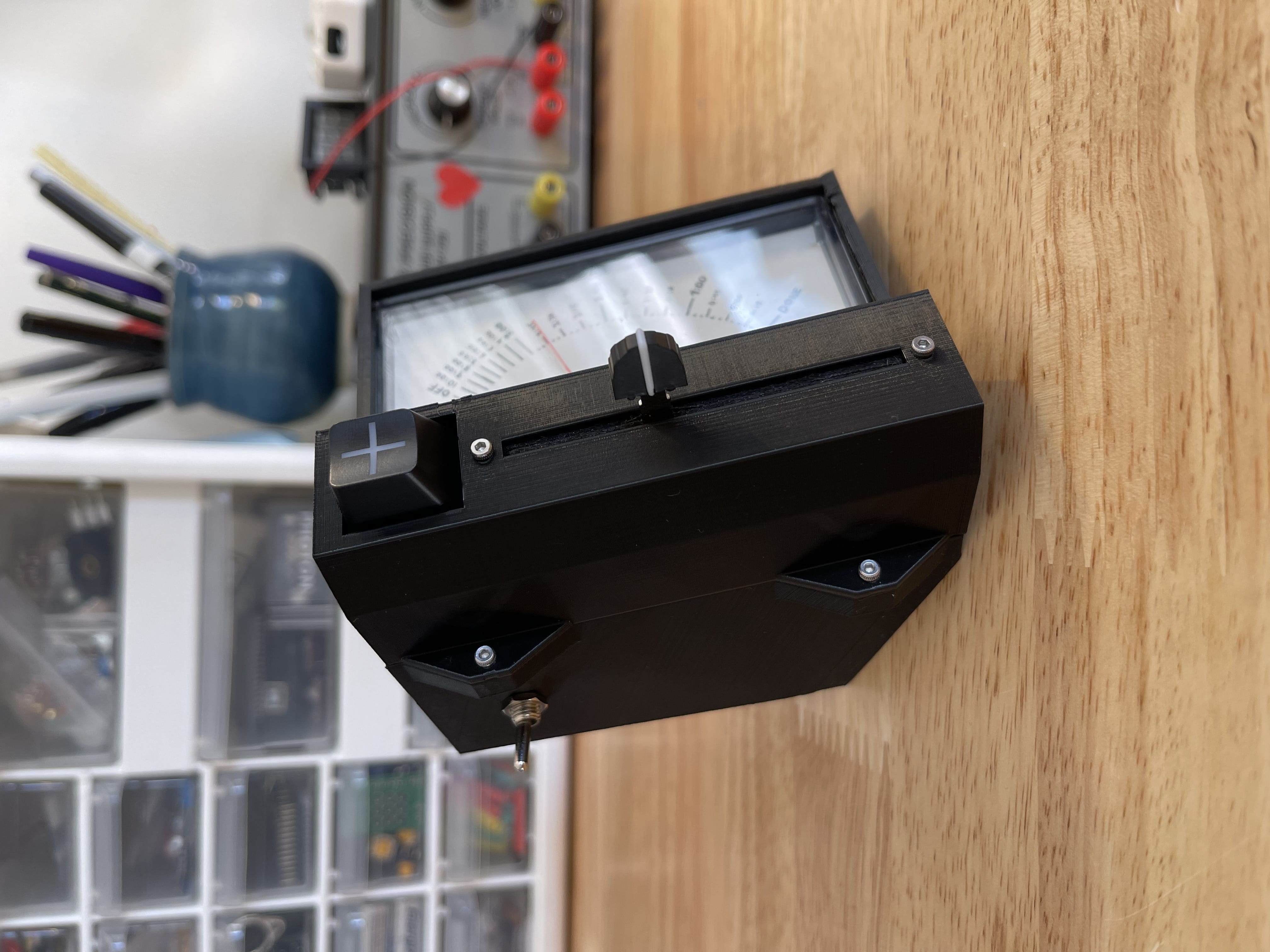Tea timer
June 2022
I have a friend who loves tea, and makes her own custom tea ware. I wasn't really aware of tea culture before we started hanging out, but if you really want to taste the subtleties in different types of tea, the best way to go about it is to brew it in small, tightly controlled steeps. As the tea session goes on, you might experiment with the length of your steeps to try to bring out different flavor notes or levels of depth.
I was watching her brew tea once, and noticed she was tracking the time of these steeps with the timer app on her phone. A classic countdown timer meant that there were alarms going off. And a stopwatch let you track how long something had been going, but at the expense of having to remember what interval you tried before.
So I designed a timer that serves as a quiet tea time companion.
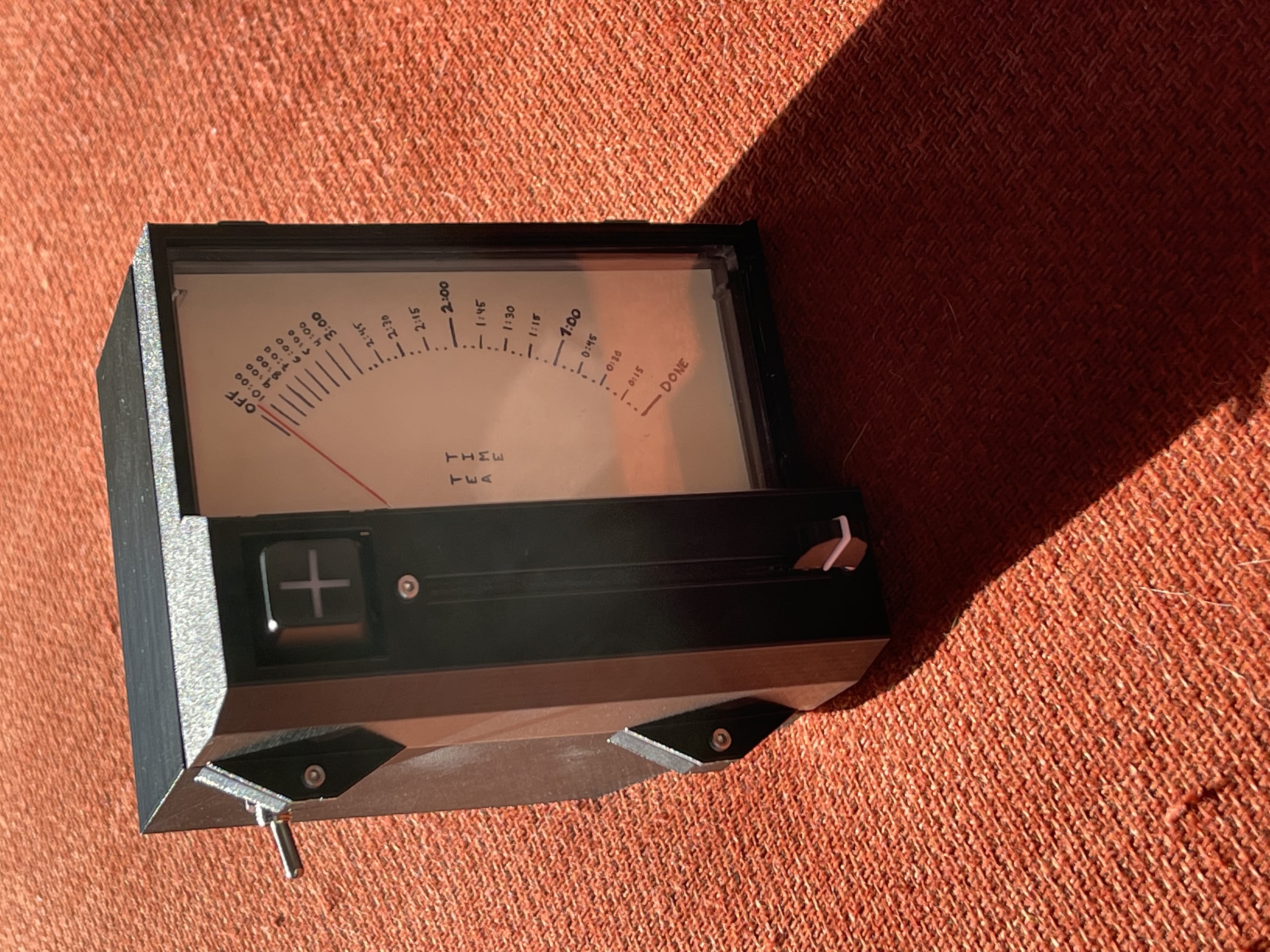
Design goals
Ideally, it would:
- Not be too visually distracting (for example, not a bright LCD)
- Be quiet (i.e. no audible timers)
- Support repeatable time intervals in the range of a few minutes or less
- Still be easily adjustable
I've seen a few projects recently about designing calm, ambient technology that doesn't demand your attention and fits neatly into your environment. I wanted to incorporate some of those ideals into this project.
Components and enclosure
For a display, I decided to use an analog volt meter, which has a silently moving needle as an indicator — no alarms, no bright screens.
To set the steep time, I chose to use a slide potentiometer. Most steep times are under three minutes, so most of the slider range is dedicated to scrubbing smoothly through that time range. Then if you want to experiment with a significantly longer steep time, you can select thirty-second intervals between 3 minutes and 10 minutes.
I also decided to design it to support repeatable steeps. There's just one button:
- The timer starts in a time-select mode, and pressing the button starts the timer
- While a timer is running, pressing the button will pause the timer. Holding it will reset the timer.
- When the timer runs out, the needle rests on "done". Pressing the button resets the timer to time-select mode again.
- Since the slide pot is a "stateful control", when the timer gets reset, it'll just be on the last time interval you selected
So to repeat a steep, you can just press the button once to reset, and once to start again. Easy peasy!
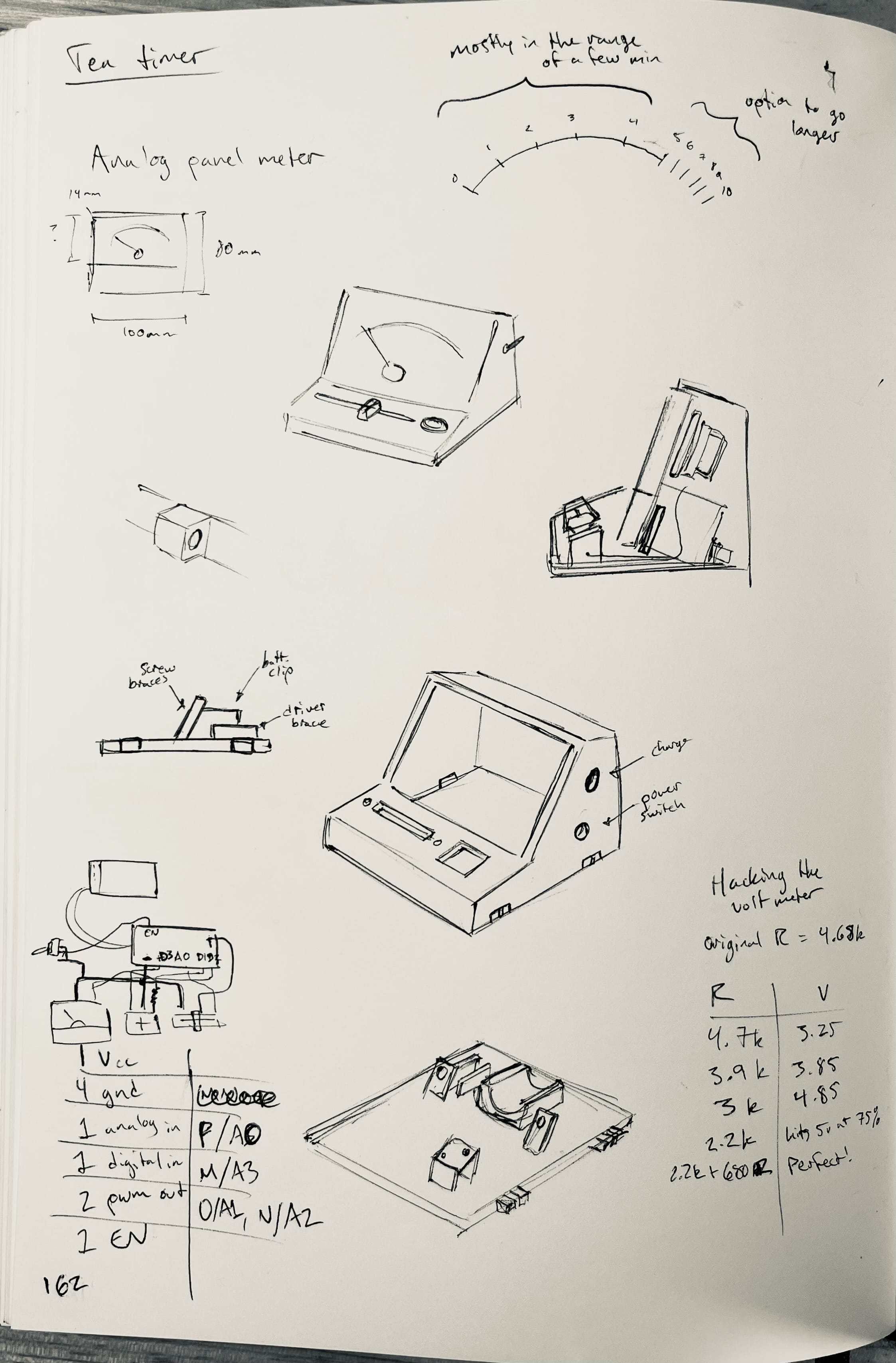
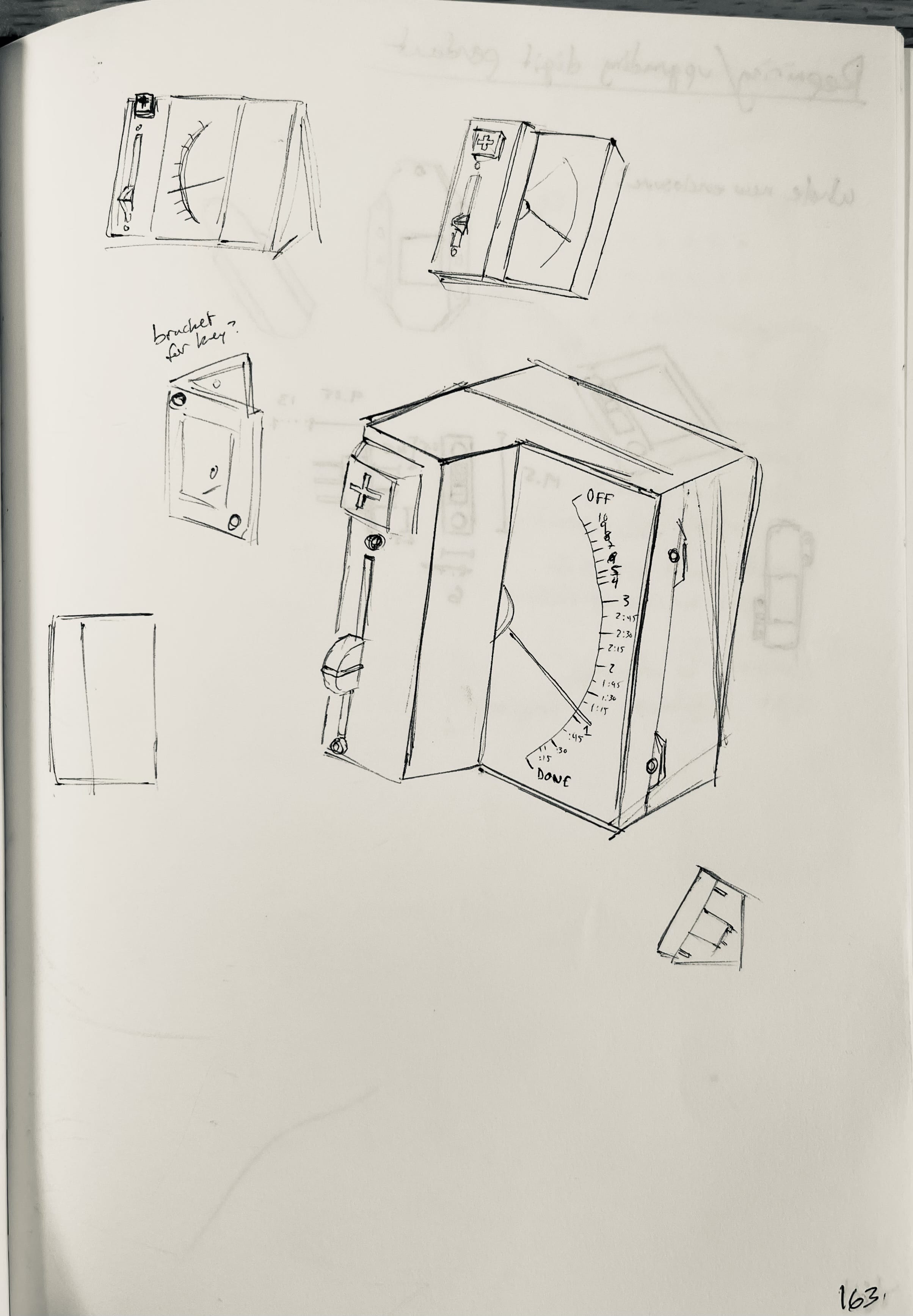
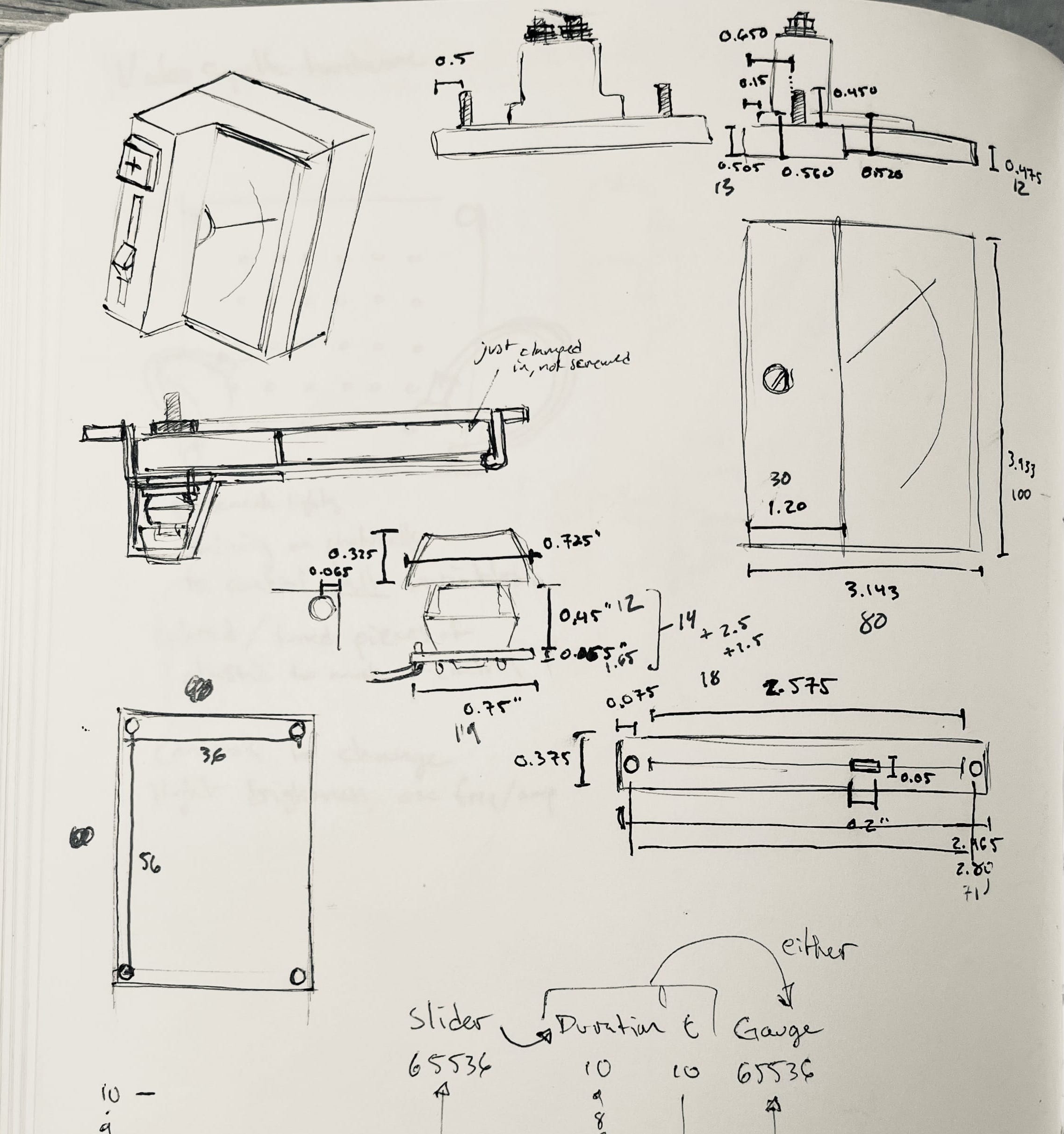
It was actually way easier to get the volt meter working than I thought, I just connected it to a PWM output on the microcontroller and boom! Swinging needles.
However, I realized that it was designed to measure up to 5 volts, when the feather RP2040 microcontroller runs on 3.3 volts! So the needle could only sweep ~2/3 of the full range. I did a bit of research and experimentation and learned that you can recalibrate the dial by changing the internal resistance. After a bit of surgery it worked perfectly!
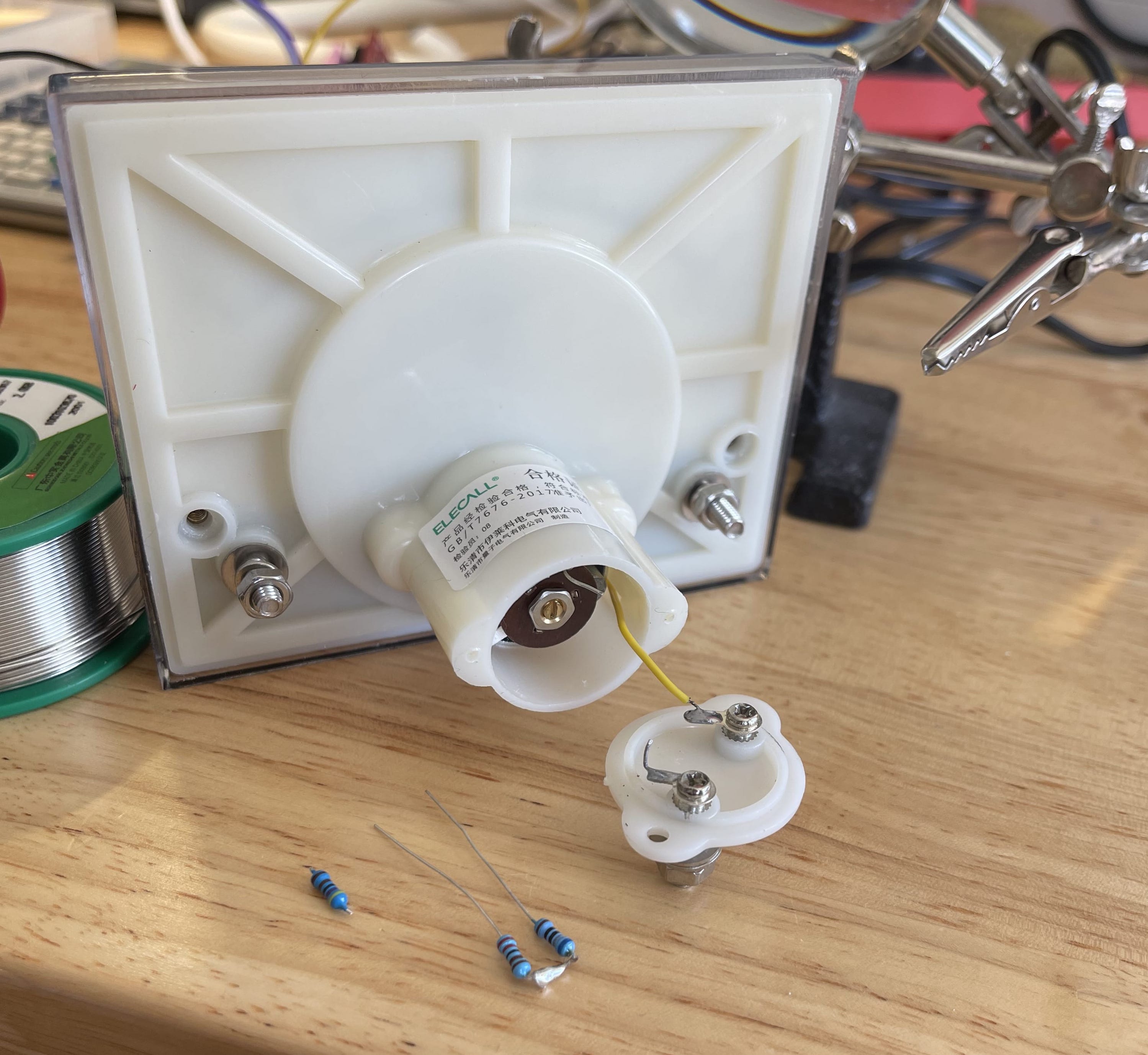
I don't have pics of the enclosure design in Fusion360 at the moment, but it was kind of a complicated one. There are two halves here — the microcontroller, on/off switch, battery, and volt meter snuggle into the back part of the case, then the slide potentiometer and button sit on top of the boring bottom half of the volt meter.
The case is pretty much just the size of the volt meter though, so to route the wires from the button and slide pot through to the microcontroller, I used a dremel to cut the corner off the plastic enclosure of the volt meter.
Here I have it semi-bolted together so I could test the timing. It worked great!
The start / stop button has a + symbol because that's the maker's mark my friend uses. It's lucky that it also happens to be a common symbol for mechanical keyboard keys :)
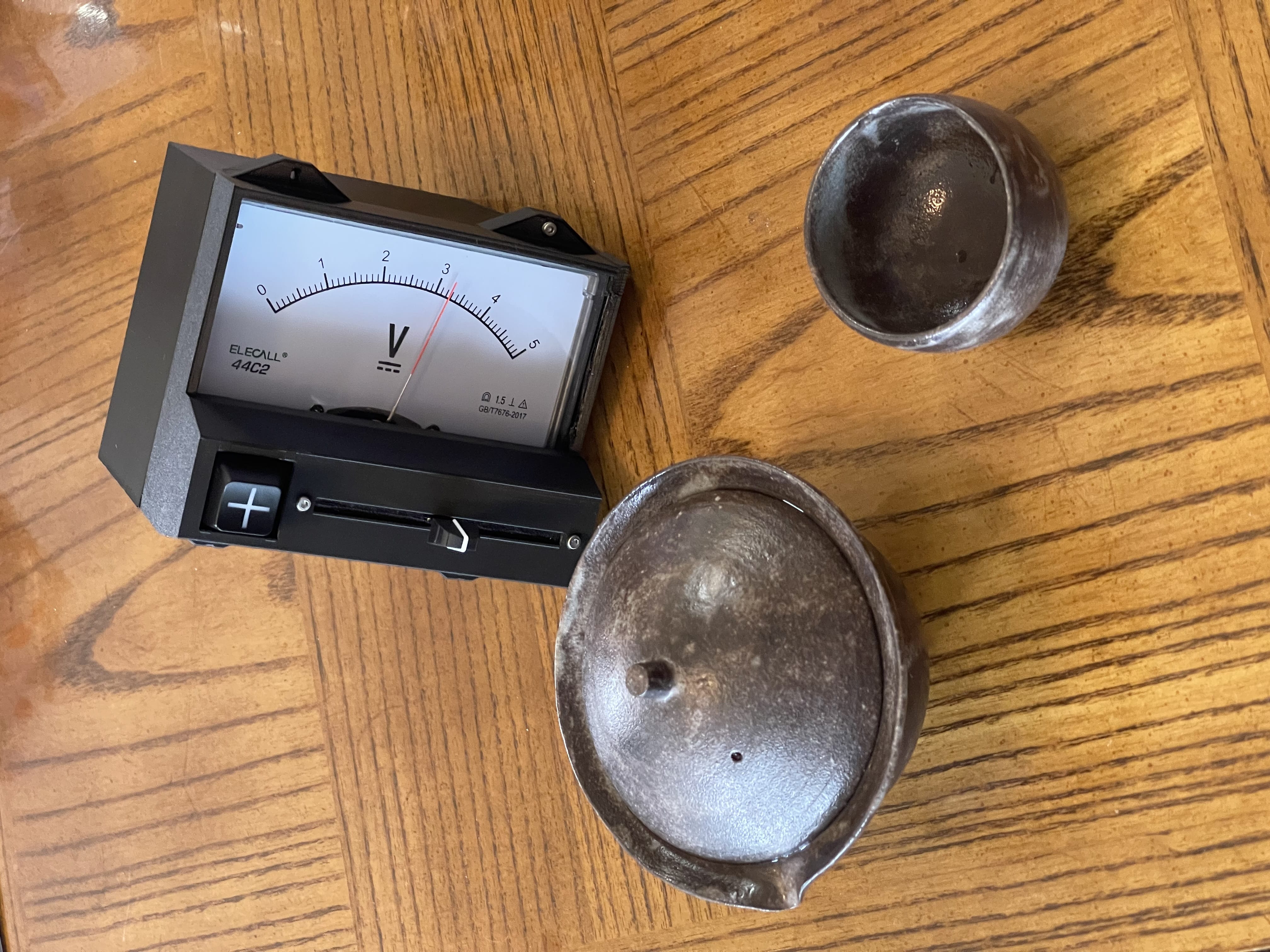
Result
Finally I hand-drew a custom label for the volt meter so that the needle could properly indicate the different time ranges. You might notice that the scale is non-linear! The frequently-used 0-3 minute range is larger than the infrequently-used 3-10 minute range. I left some adjustable thresholds in the code that maps the virtual needle position to the physical needle position so I could get it to line up perfectly with the hand-drawn ticks.
